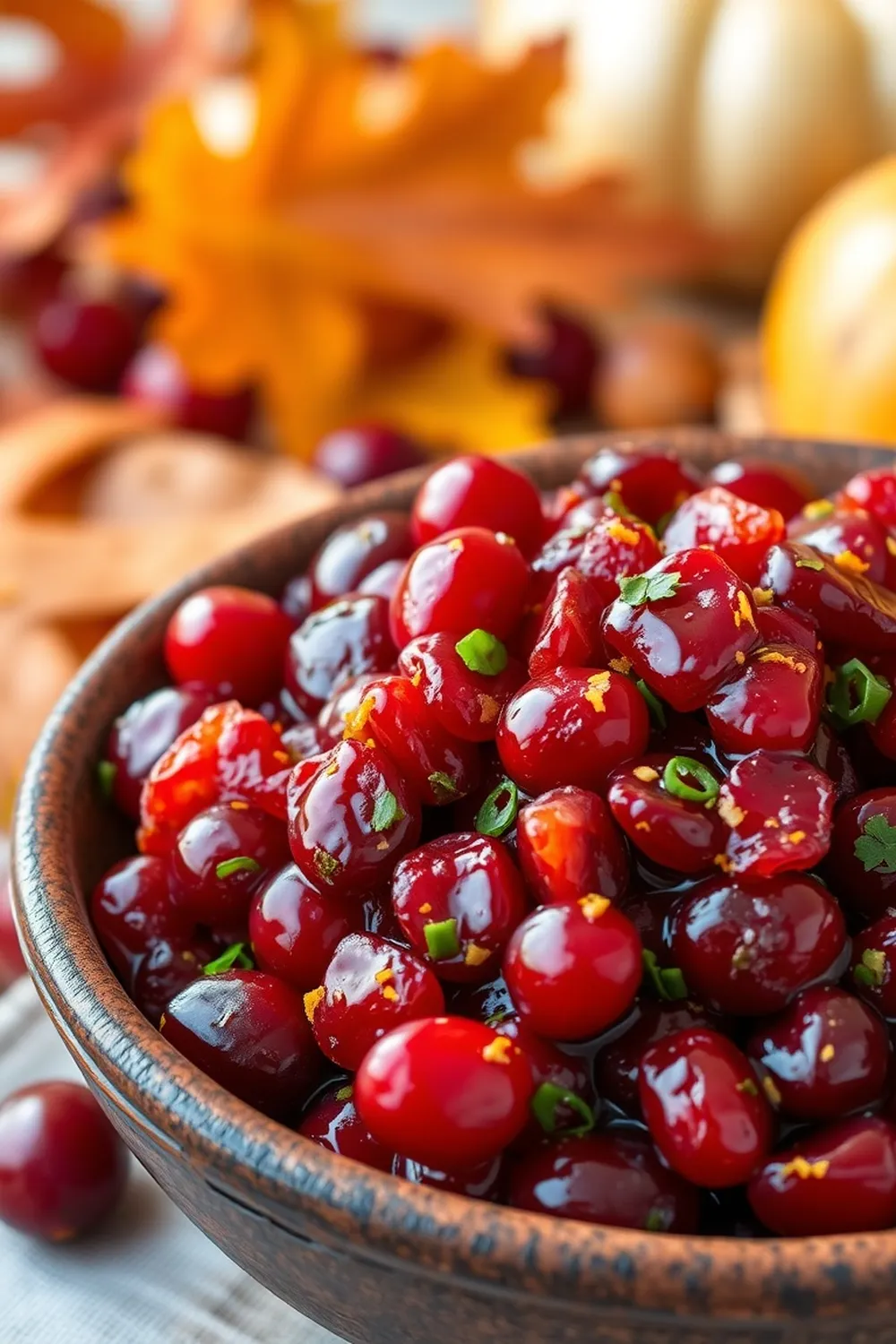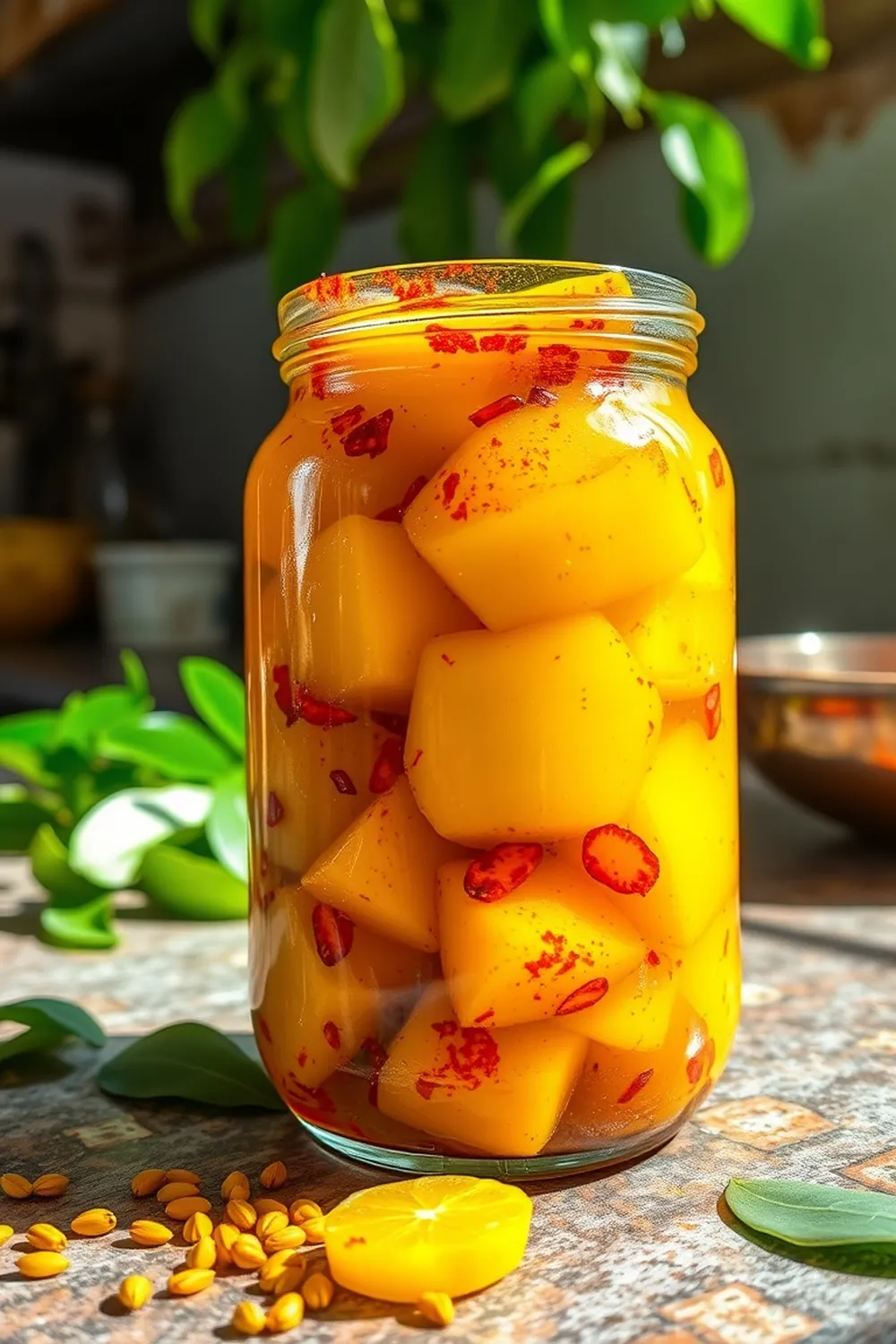- Dry roast mustard seeds until they pop and splutter. Cool completely and grind into a fine powder.
- Dry roast fenugreek seeds until golden brown and fragrant. Cool completely and grind into a powder.
- Heat sesame oil in a pan over medium heat until hot. Add asafoetida and immediately remove from heat; let the oil cool completely.
- In a bowl, combine chopped mangoes, red chili powder, salt, mustard powder, and fenugreek powder.
- Pour the cooled infused oil over the mixture and mix thoroughly.
- Transfer to a clean, dry, airtight jar. Refrigerate and consume after 8-12 hours (or longer for better flavor development).
- Calories:20 kcal25%
- Energy:83 kJ22%
- Protein:0.5 g28%
- Carbohydrates:3 mg40%
- Sugar:2 mg8%
- Salt:150 g25%
- Fat:2 g20%
Last Updated on 6 months ago by Neha Deshmukh
Authentic Mango Pickle Recipe – Mustard & Fenugreek Flavors
Hey everyone! If you’ve ever craved that perfect, tangy, spicy mango pickle with your meals, you’re in the right place. This recipe is incredibly close to my heart – it’s the one my nani (grandmother) taught me, and it instantly transports me back to her kitchen. It’s a little bit of effort, but trust me, the reward is a jar of sunshine that will brighten up any plate.
Why You’ll Love This Recipe
This isn’t just any mango pickle. It’s a beautiful balance of flavors – the sweetness of the mango, the heat of the chili, and the earthy notes of mustard and fenugreek. It’s incredibly versatile, pairs beautifully with everything from dal-chawal to parathas, and honestly, I sometimes just sneak a little spoonful on its own! Plus, making your own pickle means you control the ingredients and spice level – no more store-bought disappointments.
Ingredients
Here’s what you’ll need to create this magic:
- 2 heaped cups raw mangoes (finely chopped with skin) – about 400-500g
- 2 tbsps red chili powder
- 1 1/2 tsps fenugreek powder (methi powder)
- 1 tbsp mustard powder
- 1 1/4 tbsps salt
- 1/2 tsp asafoetida (hing)
- 1/2 cup sesame oil (til ka tel)
Ingredient Notes
Let’s talk ingredients, because getting these right makes all the difference!
Raw Mangoes: Choosing the Right Variety
You want mangoes that are still firm and tart – not ripe! The best varieties are Totapuri, Rajapuri, or any other sour mango available in your region. The skin is important too, as it adds a lovely texture and flavor to the pickle.
Red Chili Powder: Regional Variations & Heat Levels
Kashmiri chili powder is fantastic for color and mild heat. If you like it spicier, add a pinch of Byadagi chili powder or cayenne pepper. I usually use a mix to get the perfect balance!
Fenugreek Powder: Aroma and Flavor Profile
Don’t skip the fenugreek! It adds a unique, slightly bitter aroma that’s essential to a good mango pickle. Make sure it’s fresh for the best flavor.
Mustard Powder: Types and Their Impact
You can use either yellow or black mustard powder. Black mustard powder has a stronger, more pungent flavor. I prefer a mix of both for a complex taste.
Sesame Oil: Cold-Pressed vs. Regular
Cold-pressed sesame oil is ideal for its rich flavor and aroma. If you can’t find it, regular sesame oil will work, but the flavor won’t be quite as intense. (About 120ml)
Asafoetida (Hing): Benefits and Usage
Asafoetida might smell a little funky on its own, but it adds a wonderful savory depth to the pickle. It also aids digestion – a little bonus!
Step-By-Step Instructions
Alright, let’s get pickling!
- First, let’s roast those spices. Dry roast the mustard seeds until they pop – you’ll hear it! Cool them completely and grind into a fine powder.
- Next, dry roast the fenugreek seeds until they turn reddish-brown. Again, cool and grind into a powder.
- Now for the oil. Heat the sesame oil in a pan until it’s hot, but not smoking. Add the asafoetida and let it sizzle for a few seconds, then immediately remove from heat and let the oil cool completely. This infuses the oil with that lovely hing flavor.
- In a large bowl, combine the finely chopped mangoes, red chili powder, salt, mustard powder, and fenugreek powder.
- Pour the cooled infused oil over the mango mixture and mix everything really well, making sure the spices are evenly distributed.
- Finally, transfer the pickle to a clean, dry glass jar. Press down gently to remove any air pockets. Let it sit at room temperature for 8-12 hours before refrigerating. This allows the flavors to meld together beautifully.
Expert Tips
A few things I’ve learned over the years…
- Roasting Spices for Maximum Flavor: Roasting the spices really wakes up their aromas and intensifies their flavor. Don’t skip this step!
- Achieving the Right Consistency: The pickle will initially seem a little dry, but as it sits, the mangoes will release their juices, creating a lovely, slightly oily consistency.
- Ensuring Proper Oil Infusion: Cooling the oil before adding it to the mangoes prevents the spices from losing their potency.
- Maintaining Hygiene During Preparation: Use clean, dry utensils and jars to prevent spoilage.
Variations
Want to make it your own? Here are a few ideas:
- Vegan Adaptation: This recipe is naturally vegan!
- Spice Level Adjustment (Mild, Medium, Hot): Adjust the amount of red chili powder to your liking. Start with less and add more as needed.
- Regional Variations: My friend’s mom, who’s from Gujarat, adds a pinch of turmeric powder for color and a touch of sweetness. North Indian versions sometimes include amchur (dried mango powder) for extra tang. South Indian pickles often use a different blend of spices.
- Festival Adaptations: This pickle is a staple during Diwali and Ugadi in my family. It’s considered auspicious and adds a festive touch to the celebrations.
Serving Suggestions
This pickle is amazing with… well, everything! Seriously.
- Dal and rice
- Parathas (stuffed flatbreads)
- Khichdi (a comforting lentil and rice dish)
- Yogurt
- Even just a simple roti!
Storage Instructions
Store the mango pickle in an airtight glass jar in the refrigerator. It will last for at least 6 months, but honestly, it never lasts that long in my house!
FAQs
Let’s answer some common questions:
- How do I know if my mango pickle has spoiled? Look for mold, an off smell, or a significant change in color. If you see any of these, discard it.
- Can I use a different oil instead of sesame oil? While sesame oil is traditional, you can use mustard oil or sunflower oil as a substitute, but the flavor will be different.
- What type of mangoes are best for making pickle? Sour, firm mangoes like Totapuri or Rajapuri are ideal.
- How long does this mango pickle last? Properly stored in the refrigerator, it can last for 6 months or even longer.
- Can I adjust the amount of salt in the recipe? Yes, but be careful! Salt is a preservative, so reducing it too much can affect the shelf life.
- Is it necessary to dry roast the spices? Yes, it really enhances their flavor and aroma.
Enjoy making this pickle! I hope it brings as much joy to your table as it does to mine. Let me know how it turns out in the comments below!










